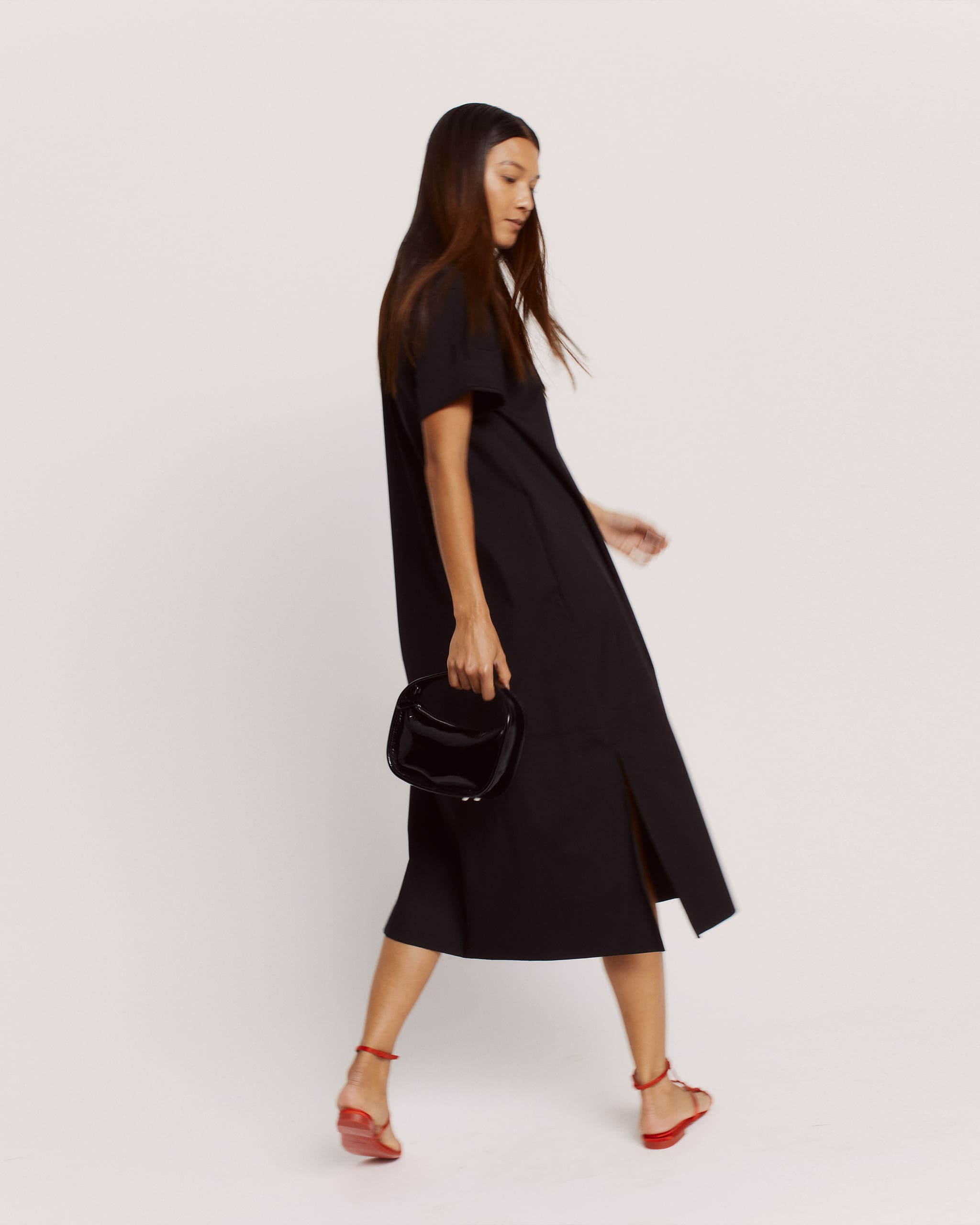Courtesy of Duster
Melissa Magsaysay, co-founder of Duster, emboldens the house dress.
Can the duster ever be a fashion statement? Although ubiquitous in Filipino culture like oversized spoon-and-fork wall art and absinthe-colored oils, you’ll hardly find the duster—also pronounced “daster”—in any fashion history books. The house dress, never meant to be worn outside, is the sartorial version of a wallflower. And that is how it knows all our secrets, much like the commanding woman who wears it.
The duster lived in relative invisibility until the pandemic thrust it into the spotlight. Amidst the chaos, a new breed of house dresses—comfortable, of good quality, and, most importantly, Zoom-worthy—took over women’s closets everywhere in the country. It was one of the few pandemic trends that didn’t dissipate along with bedazzled face masks and fancy bread. The duster’s moment was long overdue.
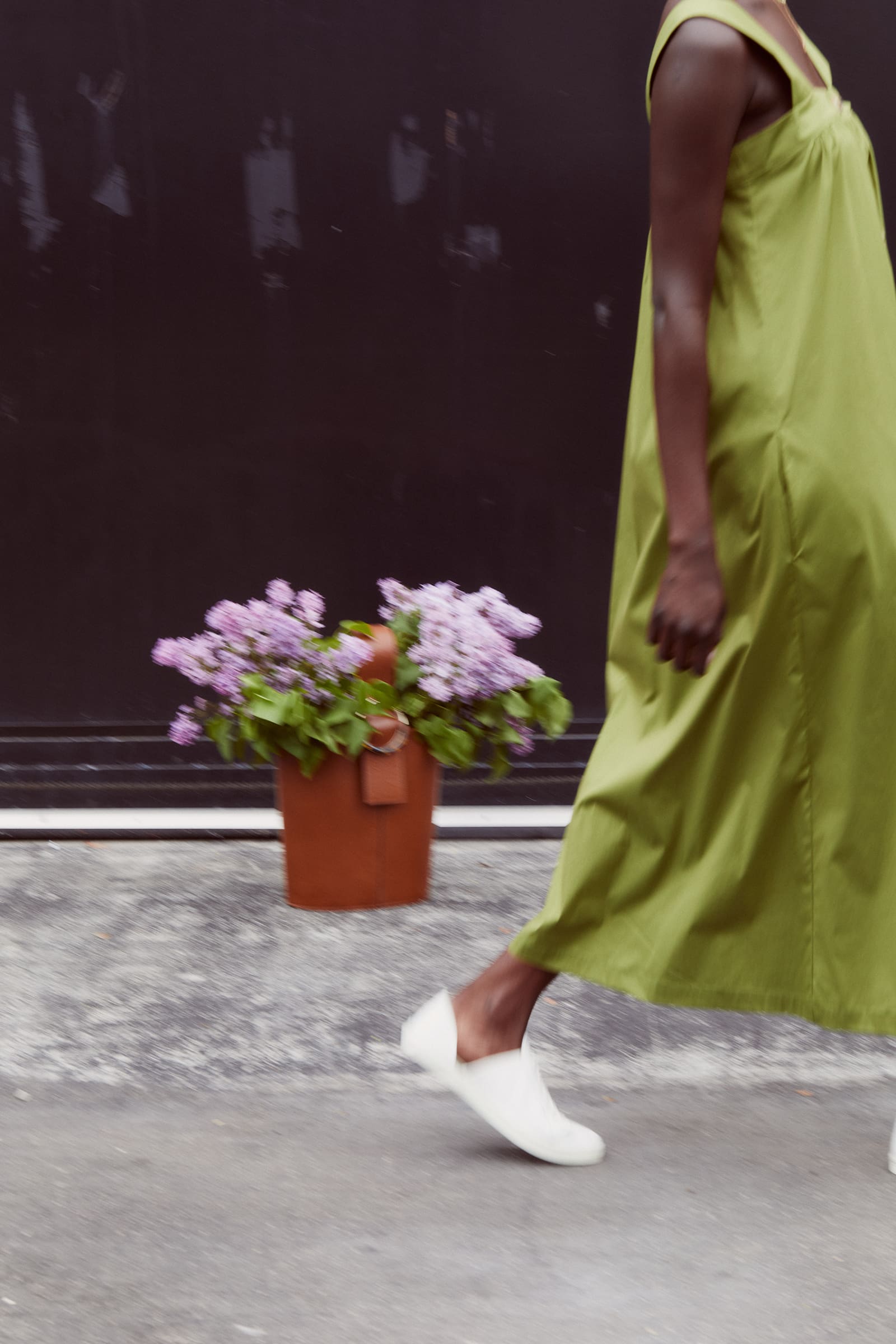
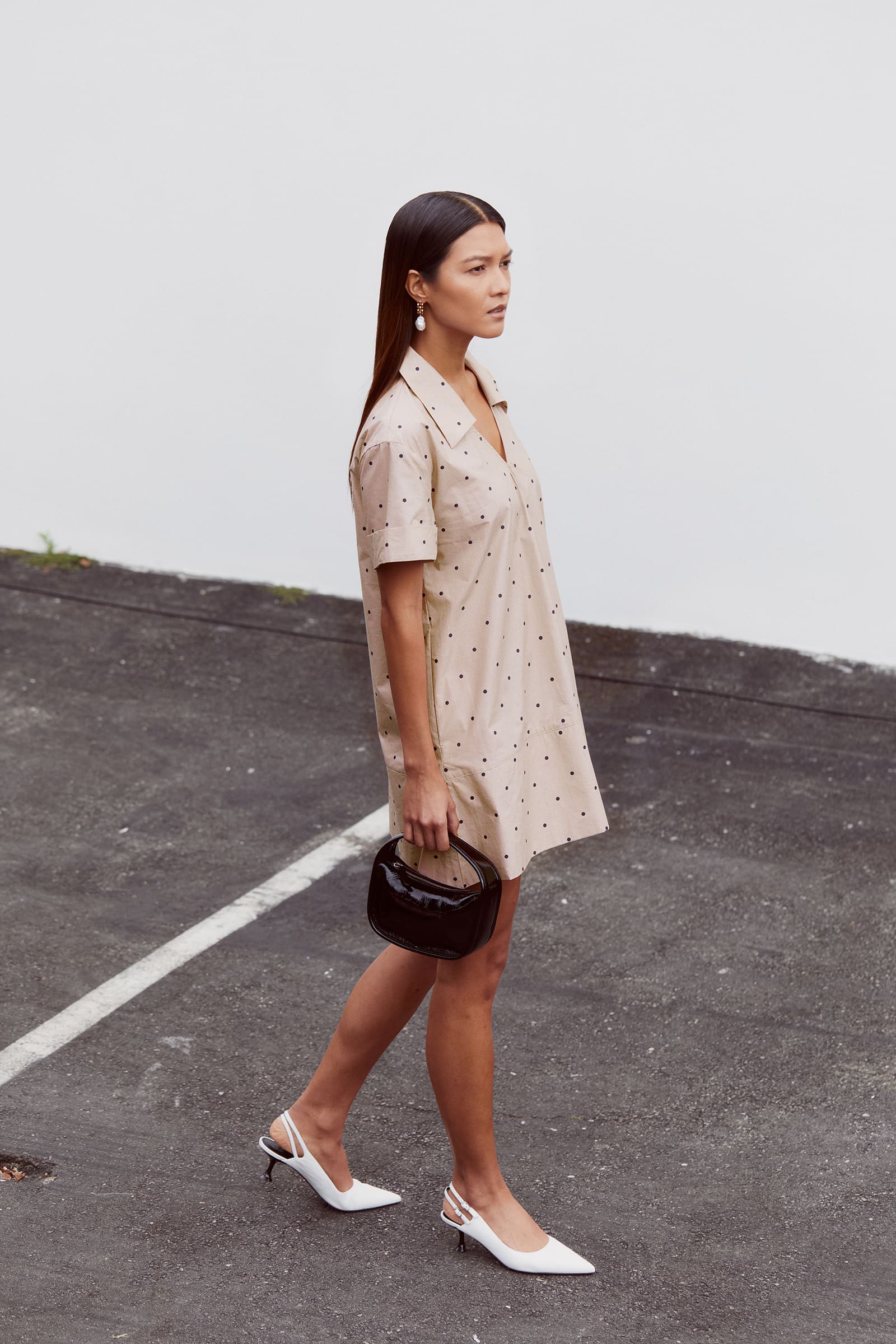
Meanwhile, in California
The thing about Filipino families is they will ooze with Filipino-ness wherever they are in the world. Melissa Magsaysay, a writer, author, wife, and mom grew up in a tight-knit household in the Bay Area surrounded by family. Her entrepreneurial debut, Duster, was inspired in huge part by fond memories of her mom, lola, aunts, and her mother’s friends wearing the duster around the house.
More than that, it’s a declaration of identity and representing the unseen parts of being a woman and being Filipino on her side of the world, especially with the uptick of AAPI violence. In creating house dresses that are also for working from home, going to birthday parties, taking the kids to school, having dinner with friends, or sitting stylishly still to meet a deadline, Duster celebrates the once-invisible parts of our lives that are now in full view.
“The Philippines, as a country, is just a wonderful, matriarchal society. The women in my family are all the most vocal and they’re the leaders, they’re the doers. And when all the women are wearing dusters, it’s just very democratizing. There’s so much that we all have in common and go through, no matter where we live or where we are in life. The duster is a great unifier.”
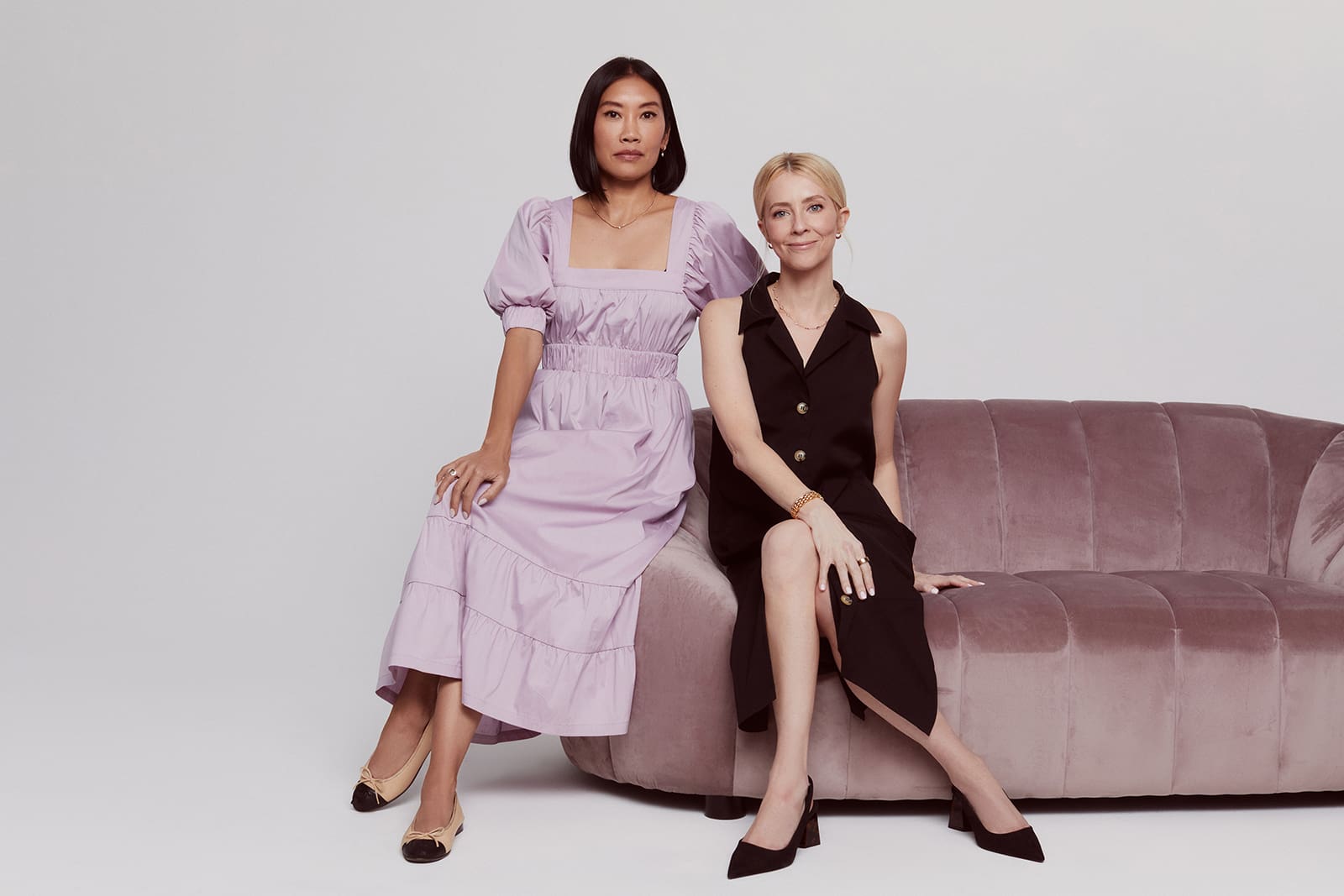
“You can say it’s just a house dress, but I’ve seen it do so much more outside the household. I’ve seen it actually equalize and then unify groups of women who maybe outside that household wouldn’t be seen as equal because of how we view them in society. I see it evolving through that; through the ethos of continuously unifying women to have each other’s backs,” Melissa says.
Melissa was also inspired by her great uncle, former President Ramon Magsaysay, whom she describes as a true man of the masses. She would hear stories about him from her dad and her favorite one is, of course, related to fashion. “To his presidential inauguration in the 1950s, he wore a barong, which up until that time was seen as such a common man’s piece of clothing and was looked down upon. It was a sartorial statement of who he was. And ever since then, the barong was seen, as formal wear for men. It’s like a Filipino tuxedo, essentially.”
“I’ve always carried that in my mind. Not that I was going to create a line of barong, but there’s some inspiration there that’s always been lingering, almost like it runs in the family. There’s this sense of mobilizing and utilizing a platform or your experience to move and make some statement through fashion.”
More Than Just a House Dress
“Duster is really a statement more than anything,” shares Melissa. Her business partner, Andrea Racey designs and manufactures their products, which are sold online across the USA. It’s a business that’s well-suited to LA living, and its founder is proof.
“The Duster is really the physical manifestation of our lives being more seamless. I’ve been in my mine all day. I took my son and his two friends to a movie. Then I ran a bunch of errands. Then I came home and lay down. Then we just went to a friend’s Fourth of July barbecue for an hour. Now I’m back and I’m doing an interview with you.”

“Our days are so multifaceted and dynamic, which is awesome. And I think that’s something that really needs to be celebrated and amplified, not like, ‘Oh, I’m changing into this to drop my kid off. And then I’m going to put on a fancy blouse to take this meeting, and then I’m going to change back to a sweatshirt to do this.’”
To further its mission, Duster partnered with Moms First US, a movement that fights for child care, paid leave, and equal pay. In America,75% of invisible, uncompensated domestic labor falls on women in the home. Caregiving, certainly an in-demand occupation since the pandemic, is also one of the lowest-paying jobs one can get. “And it mostly falls on women of color,” she adds.
“We really want to create products that make women feel visible and valued to help them through their day. We want to create connectivity between women in general and caregivers—whatever that looks like in your life. However Duster evolves and grows, it’s rooted in that. Through the ethos of continuously unifying women to have each others’ backs.”
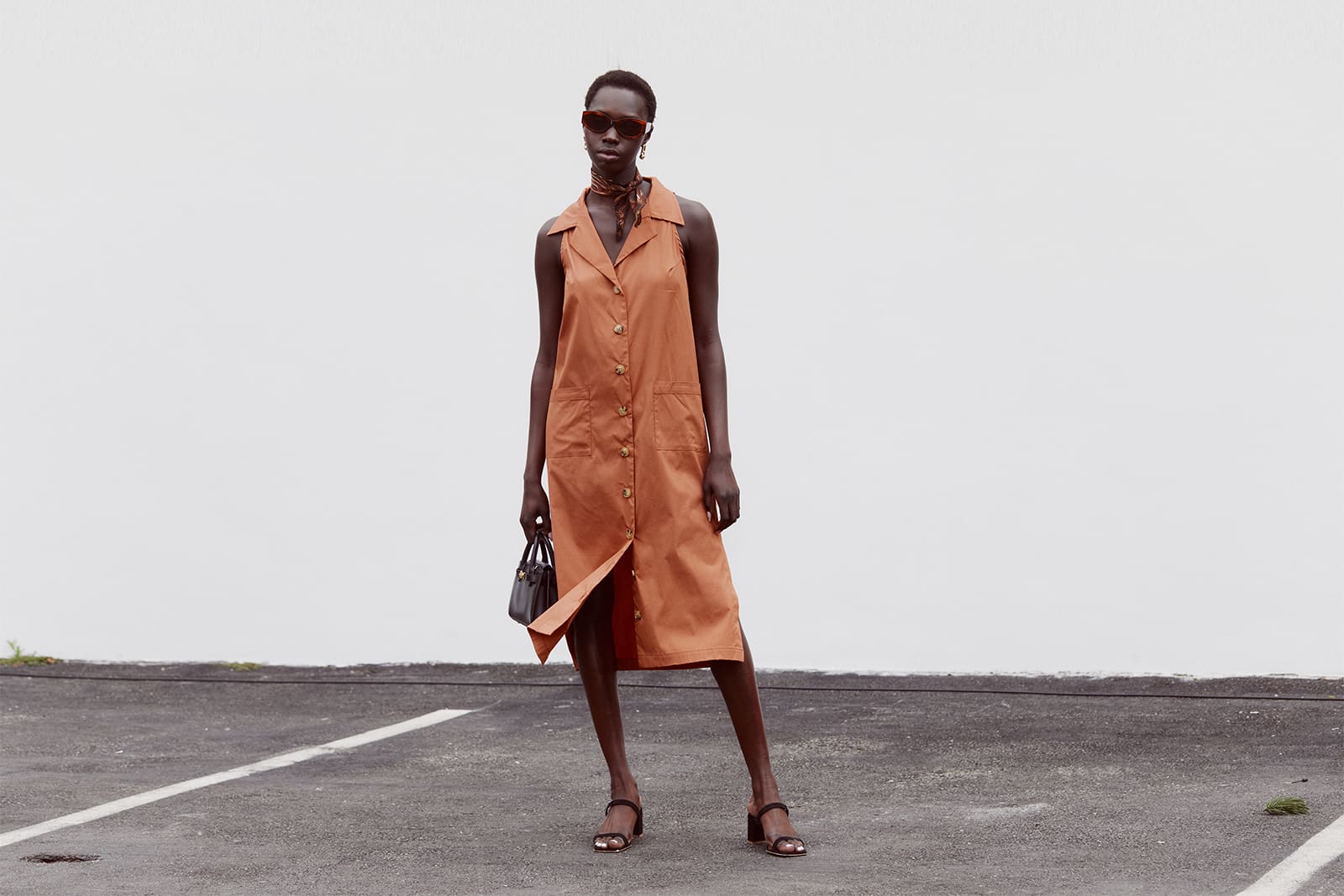
Melissa also sees the brand expanding to other products for women, and one day coming full circle and connecting Duster to the Philippines. “Whether that’s working with traditional weavers or getting fabric from the Philippines or doing some collaboration or capsule, that’s always been in my head.”at
Who would have thought the duster—the same unglamorous dress that once stayed inside the house—would find its place in glamorous L.A.? Perhaps, in a month, we’ll see it making things happen care homes and picking up a smoothie along the aisles of Erewhon. Ah yes, a Filipino girl can dream.
- Designer Jude Macasinag Showcases the Relationship of Fashion and Community
- Rafé New York Takes Us To A Dazzling Reimagining Of Studio 54
- Wawi Navarroza: “The Artist Is Now A Mother.” On The Vulnerability And Joys Of Motherhood In The Artworld
- Paris-based Filipino Designer Norman De Vera Celebrates His Creative Journey On The Global Stage
